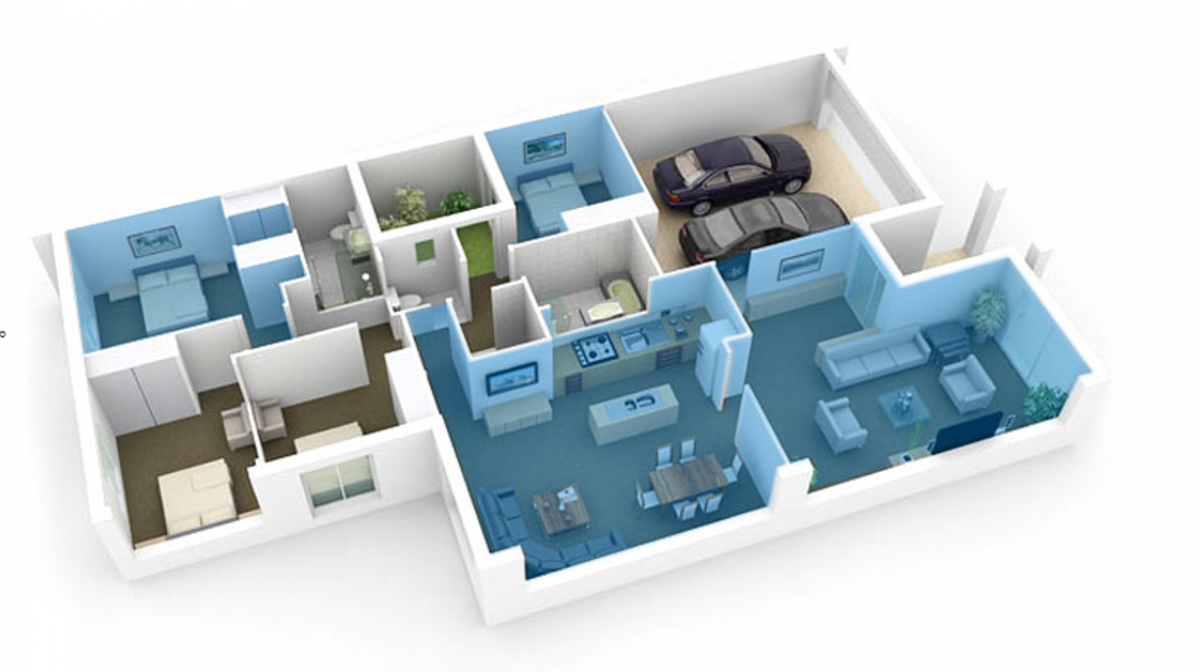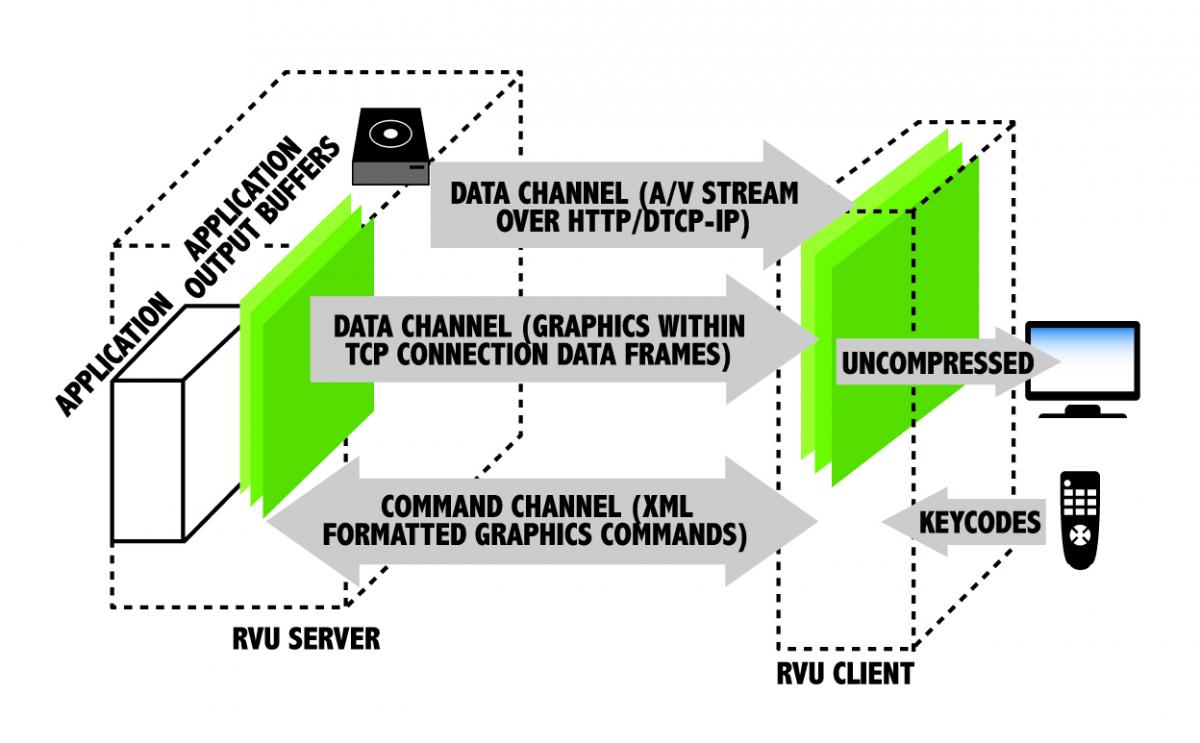What is RVU
RVU technology allows a PayTV provider to enable the same User Interface and feature set experience across every TV in the home RVU (pronounced "R-view", for Remote Viewing) was developed by a group of leading technology companies to enable Remote User Interface (RUI) technology. RUI allows a single server in the home to provide the same consistent User Interface and feature set to multiple RVU enabled devices. Put simply, this turns every RVU enabled device into a DVR, enabling a user to pause, rewind and fast forward live and recorded video, and provide features like a consolidated playlist, Video On Demand and other features to every TV. By integrating the RVU functions into a "smart" TV, a Pay TV customer can get the same DVR experience at every TV in the home, but without the need for a set-top box at every TV. RVU is based on vector graphics, utilizing the HTML-5 Canvas layer which is found in all modern browsers. This ensures a wide base of compliant devices and a simple but effective interface for generating a consistent User Interface across a large number of devices. The RVU protocol uses DLNA® technology as a foundation for video management. RVU-compliant TVs and clients are networked at home with an RVU server, and once they are connected, the TV viewer can watch content in any room with the same "look and feel" with the program guide and experience send from the server to the clients. One of the main benefits of RVU is the implementation of set-top box like trick modes on a client device, enabling a full DVR experience without the need for a box. RVU has been implemented in TVs from Sony, Samsung, and Toshiba with many more under development and is the basis of the highly successful DIRECTV "Genie" home client/server architecture. The specification is available from the RVU Alliance.
Remote User Interface (RUI)
Flexibility and Features:
- RVU runs in a lightweight footprint.
- RVU maintains the exact look and feel of the original device.
- RVU is flexible enough to take advantage of local graphic capabilities of the client.
- Graphic items can be cached in offscreen buffers and blended remotely on the client under server management.
- System is efficient in network utilization.
- RVU supports live, recorded and Video On Demand TV programming.
- RVU supports Standard Definition, High Definition and 4K Ultra High Definition programming
- RUI supports extensions for advanced UIs and client capabilities, for example, 3D.
Graphic Capabilities:
- Vector Graphics basis allows UI designers to create all manner of layered graphical images and device implementers to transmit and render efficiently
- Utilizes the HTML-5 “Canvas” layer supported on all modern browsers
- Draw dynamic interactive RUI pages
- Support for legacy RVU 1.0 clients using bitmap based graphics
- Pixel accurate implementations ensuring the exact look and feel of the original device, and across multiple devices
RVU for Consumers
- RVU enables the whole home DVR, with the same experience, content and features available at every TV in the home
- Provides the ability to perform DVR trick modes (play, pause, fast forward, rewind) without the need for a DVR at every location
- Experience live, prerecorded and Video On Demand shows at every TV
- Lets a user start viewing in one room, resume in another room
- Manage your DVR playlist from any TV
- One master set-top box (the RVU server) can "power" the entire home entertainment experience in your house

RVU for Content Service Providers
Proven Solution
- RVU is field proven, with deployed solutions available from many Tier 1 TV, set-top box server and technology companies
- RVU has mature specifications, test tools and test procedures available now for a PayTV operator to develop a complete system solution
- RVU has been designed by leading technology companies to ensure interoperability and compatibility
- RVU is the basis of DIRECTV’s Genie client/server architecture with millions of client and server devices deployed in the field
- RVU has been implemented by leading TV companies such as Samsung, Sony and Toshiba, with others pending
Flexibility and Features
- RVU was designed to run in a lightweight footprint, and not require costly clients with lots of processing power
- RVU maintains the exact look and feel of the original User Interface to a pixel level of accuracy
- RVU is flexible enough to take advantage of local graphic capabilities of the client.
- Graphic items can be cached in offscreen buffers and blended remotely on the client under server management.
- System is efficient in network utilization.
- RUI supports live TV, recorded TV, VOD and broadband streaming from a capable server to RVU clients
- RUI supports extensions for advanced UIs and client capabilities, for example, 3D and 4K
Based on Standards
-
Device and Service Discovery and Control
- UPnP SSDP
-
Media Management, Distribution, and Control
- Digital Living Network Alliance™ (DLNA®)
- UPnP
-
Content streaming and media format interoperability
- DLNA AV Transport HTTP
-
Digital content protection
- DTCP-IP link protection
-
Remote User Interface
- Low-overhead remote RUI, including remote control commands and status from client devices to the server
Description of RVU Technology
RVU Signal Flow:
Server and Client elements send RUI commands and responses on command channels as XML strings. On data channels, RUI elements send binary or ASCII data, as well as A/V streams, over HTTP/DTCP-IP.
